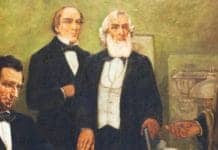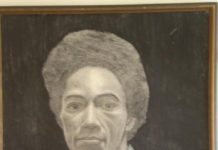by Wanda Sabir
Notes from prison
Beverly Henry died. I just got the email today. I don’t know if she made it to Cirque du Soleil or to the snow or to Disneyland. When one’s time is short, the list can get long and after spending most of her adult life behind bars for drug related crimes, Chopper had a lot of living to catch up on.
I don’t know if she ever found out where the cancer was located and if it was connected to the mastectomy she had with no follow-up in prison 20 years before. I wonder what her daughter thinks of the $1,000 she was able to leave her. I caught the train down to visit her only once in February, about a month before she died. She was in a lot of pain, her poor body not what it was when the state took her into custody. There should be a guarantee that a person will leave in better condition than when they entered, rather than the reverse.

Spring is here in the Central Valley, where more women used to be locked up than in any other place in the country, perhaps the world. I don’t know about those numbers since VSPW or Valley State Penitentiary for Women was converted into a men’s prison a couple of years ago, but California is still in the lead for incarceration and the closing of this prison doesn’t mean the women were released – no, they were just shifted to another cell elsewhere, often county systems which are ill-prepared for the stresses and needs of those incarcerated for long periods of time.
California is not off the hook for prison overcrowding. One woman I met with laughed and said, “They release 30 and admit 80 more. Overcrowding is still high.”
I can’t remember how long I have been participating in California Coalition for Women Prisoners Legal Advocacy team, Sister-to-Sister – I’d have to look back at reflections written or photos – but it has been at least six, eight maybe more years. I cannot think of any activity I have been a part of that brings so much pain as it uplifts my soul. I do what I do for them.
Every time I meet someone inside who is happy to see me no matter how long it has been or that I might have forgotten her name or the details of her case, the fact that I am there gives her hope – hope I always hope is not displaced given the fact that resources have decreased over the years. We do not have a staff attorney dedicated to representing women convicted of crimes connected to spousal abuse. The majority of women with capital cases are battered women.
California is not off the hook for prison overcrowding. One woman I met with laughed and said, “They release 30 and admit 80 more. Overcrowding is still high.”
This time I met two women who were excited to meet the columnist who writes “Wanda’s Picks.” It is these smiles that make me continue to visit and write despite the ever increasing load I place on myself as needs increase while the hours to accomplish goals and objectives stay the same.
I got up at 4:30 a.m. to prepare for the all day excursion to Chowchilla State Prison that morning, March 21. I even hosted a special radio show on Thursday so I could rebroadcast it the following morning almost three hours earlier – 5:30 a.m. instead of 8 a.m. After starting the pre-recorded broadcast, I showered, jumped into my clothes, texted Hafsa that I was running late at 6:15 a.m. and drove to the West Oakland BART Station.
When I got into the rental van that Friday morning at 6:45 a.m., the energy was youthful exuberance and excitement. The six women were introducing themselves, sharing stories of graduate school plans, current projects, which ranged from work with incarcerated juveniles, volunteer projects that matched adults with youth for mentoring and a rehabilitation program which, with a 50 percent recidivism rate, is seen as successful. A wrap around program, this is one that supposedly connects prisoners with services to provide for needs which are critical in any program aiming at sobriety, yet with minimal follow up and no guarantees.
I listened and watched the women settle in after introductions, with their technology – iPhones all around. Some were mothers having to juggle work with school with parenting. All seemed to be doing well: One woman was just accepted into law school on a substantive scholarship, another was taking a trip to the East Coast to visit colleges and universities. Still another, a recent transplant from the East Coast, was completing her graduate internship with former prisoners with alcohol and drug problems.
All were college grads or about to be graduates from elite and prestigious institutions like UC Berkeley and Smith. We were a mix of three volunteer groups traveling together. The Sister-to-Sister teamed up with the Compeñeras Team, who are bilingual Spanish, as the Sister to Sister team has a minimal number of members, so to keep active we had to bring in others.
Ultimately, it is about freeing the women and advocating for their human rights.
Eve Ensler’s ‘The Vagina Monologues’ in Oakland
This performance, April 16 and 17, 8 p.m. both days, at The Uptown, 1928 Telegraph Ave. at 19th Street, Oakland, benefits the California Coalition for Women Prisoners. Tickets are available online at tvmoakland.bpt.me.
CCWP is a grassroots social justice organization, with members inside and outside prison, that challenges the institutional violence imposed on women, transgender people and communities of color by the prison industrial complex (PIC).
Jazz Hero Award goes to … the dynamic Ms. Faye Carol
The Jazz Journalists Association recognizes the dynamic Miss Faye Carol with the Jazz Hero Award at Yoshi’s, 510 Embarcadero West, Oakland, 1-3 p.m., Saturday, April 12. Tickets are $20. Call 510-238-9200 or visit www.yoshis.com.
The 10th Annual CubaCaribe Festival of Dance and Music ‘Moving Forward’ April 5-27
The 10th Annual CubaCaribe Festival of dance and music will feature contemporary, popular and folkloric Caribbean dance and music. 2014 marks a major milestone for the CubaCaribe Festival, which naturally inspired the theme, “Moving Forward,” as they honor the roots of the Caribbean and its Diaspora but also look to the future and to creating new cultural experiences for their audiences.
The festival has been highly acclaimed for being the only festival to present both contemporary and folkloric cultural expression, religion, history, folklorica and politics of the Afro-Caribbean Diaspora. In this year’s festival, we forge new ground with the expansion of what is considered folkloric and contemporary as it evolves to create new forms.
- Week 1, “Moving Forward,” April 11-13, Dance Mission Theater, 3316 24th St., San Francisco; Friday-Saturday at 8 p.m., Sunday at 3 and 7 p.m.; tickets $25 online, $27 at the door; Special Sunday Family Matinee tickets $10 youth, $18 adults, 12 and older, www.brownpapertickets.com
- Week 2, “Alayo, Aguas and Arenas,” April 17-19, Laney College Theater, 900 Fallon St., Oakland; Thursday – Saturday at 8 p.m.; tickets $25 online, $27 at the door, www.brownpapertickets.com
Special events:
- April 9: Lecture and demonstration with Gladys “Bobi” Cespedes: “The Yoruba Tradition in the Diaspora, Lucumi Migration to the USA” at MoAD (Museum of the African Diaspora), 685 Mission St. at Third, San Francisco, at 7 p.m. Tickets are $10 online, $12 at the door.
- April 16: Film screening: “Tengo Talento” (Cuba 2014), Q&A with director Eli Jacobs-Fantauzzi at MoAD at 7 p.m. Tickets are $10 online, $12 at the door.
- April 27: Closing Cuban Dance Party and CubaCaribe Fundraiser at BrasArte World Dance Center, 1901 San Pablo Ave., Berkeley, at 4:30-9 p.m. For information, visit www.cubacaribe.org.
Barbara Chase-Riboud: The Malcolm X Steles at UC Berkeley Art Museum February-April 2014
Barbara Chase Riboud’s Malcolm X steles grace the galleries at the University Art Museum, one of several exhibitions which close this edifice until the new museum opens at a later date. Her reception on a February evening was like an old homecoming, the who’s who at the talk and reception afterward with Mildred Howard, Arthur Monroe, Neshormeh Lindo, Raymond Saunders, Hubert Collins and many others, including the founding curator of UCBAM, who commissioned Chase-Riboud so many years ago.
What is striking about the art and artistry of Barbara Chase-Riboud, equally well known for her figurative sculpture, “Africa Rising” (1998), which marks the sacred African Burial Ground National Monument site in Lower Manhattan as for her poetry and prose, is the subtle elegance of the petite woman whose visage belies the 40 years she has been making or creating art. The Malcolm X Steles exhibition – the series created between 1969 and 2008 – Chase-Riboud’s first exhibition in 10 years closes the curtain on an institution experiencing a makeover soon to be unveiled.
In her 1973 solo exhibition, Peter Selz, founding director of BAM/PFA (Berkeley Art Museum and Pacific Film Archive), commissioned the work “Confessions for Myself” (1972) from the BAM/PFA collection that introduced Chase-Riboud’s fine art to the West Coast. It is amazing, yet not amazing considering UC Berkeley’s radical and politicized history that Malcolm X Steles or monuments would conclude this phase of the BAM journey.
The steles represent lives –the lives of public servants and stateswo(men) and artists – who Chase-Riboud lifts literally in work which combines seemingly incompatible elements, silk and bronze. She works big, the braided cord skirts are hand stitched or woven then attached to the metal bodies – the process is one of philosophical reinvention. The metal pieces vary from warm red to bronze and black; the skirts red, tan and black.
Drawings and sketches are also a part of the exhibition. Many of these portraits include stories one cannot always decipher (smile). It’s a good thing there is a wonderful catalog available.
What is striking about the art and artistry of Barbara Chase-Riboud, equally well known for her figurative sculpture as for her poetry and prose, is the subtle elegance of the petite woman whose visage belies the 40 years she has been making or creating art.
In reading about her life and listening to her speak, I learned that not only did the artist participate in the First Edition of the World Festival of Black Art and Culture, where she met presiding Negritude founding member, President Léopold Sédar Senghor, poet and statesman (1960-80), after she left Senegal, Chase-Riboud also attended the Pan African Festival in Algeria, where she met Eldridge and Kathleen Cleaver and other BPP members. A friend of the Party, I can understand better the warm embrace she shared with Sister Elaine Brown that evening, whom she knew well from Ms. Brown’s sojourn in Paris, France – Chase-Riboud’s home for many years.
Chase-Riboud’s books are sojourns into a Pan African past – where thankfully she is calling names and marking important moments in our collective histories. Chase-Riboud’s art takes us along aesthetically across multiple landscapes and provinces from her first experience at 18 or 19 lost in Cairo, Egypt, to her state dinner with Chairman Mao (1965) – the first American to do so – to her literary career launched with “From Memphis to Peking” by friend and at that time editor Toni Morrison in 1974.
Her mastery of the classics begins with Kemet or Egypt and her experiences there remain one of her biggest influences as she trekked the world, doing comparative artistic study, finding everything else – Rome, Greece … except perhaps China (smile) paling in comparison.

That was the year on March 27 the two surviving Soledad Brothers – Fleeta Drumgoole and John Clutchette – were acquitted by a San Francisco jury of the original charges of murdering a prison guard.
An only child born into a middle class African American family in Philadelphia, Chase-Riboud’s father, Charles Edward Chase, a contractor, and her mother Vivian May West, a medical technician, this precocious and talented child was taking dance lessons, playing the piano and writing poetry before 10. Hers was a life, is a life of “yes” – “Yes, this is possible.” “Yes, you can do this, if you are disciplined and exhibit mastery and creativity.” And in this encouraging environment, Chase-Riboud excelled.
This thoughtful woman spoke that evening, Feb. 11, with Lawrence Rinder about her distinctive use and choice of materials, and how her visual art practice aligns ideas of monument with memory. What I loved about her work and person is the intentional nature of her life; nothing is left to chance and she doesn’t mind being the only woman or only Black woman at the party (smile). Chase-Riboud captures in her person what it means to be a Diaspora citizen.
This precocious and talented child was taking dance lessons, playing the piano and writing poetry before 10. Hers was a life, is a life of “yes” – “Yes, this is possible.” “Yes, you can do this, if you are disciplined and exhibit mastery and creativity.” And in this encouraging environment, Chase-Riboud excelled.
Born in this nation’s first capital, Philadelphia, her historic novels, “Sally Hemings” (1979) and “Echo of Lions” (1989), are both characterized by lawsuits. In the first, the Jeffersons, the white Jeffersons, did not want to be associated with their Black relatives. This work “earned Chase-Riboud the Janet Heidinger Kafka Prize for the best novel written by an American woman and sold more than 1 million copies in hardcover,” according to Wikipedia.
It took from 1979 to 2001 for the Thomas Jefferson Foundation at Monticello and the National Genealogical Society to announce their conclusions that Jefferson had in fact fathered Hemings’ children, “Chase-Riboud having been the catalyst in changing Jeffersonian scholarship forever” (ibid).
Chase-Riboud sued DreamWorks for using her book “Echo of Lions” (1989) as the basis of the screenplay for its film “Amistad.” DreamWorks’ argument was that since the novel is based in historic fact, which no one owns the rights to, Chase-Riboud could not own the rights to her work. Not only did she get a satisfactory settlement in 1991, Granville Burgess vs. Chase-Riboud. This copyright decision is an important one that now safeguards one’s rights to creative work based on historic fact.
“Judge Robert F. Kelly concluded that while ‘laws were not enacted to inhibit creativity … it is one thing to inhibit creativity and another to use the idea-versus-expression distinction as something akin to an absolute defense – to maintain that the protection of copyright law is negated by any small amount of tinkering with another writer’s idea that results in a different expression’” (ibid).
The resulting decision constituted a significant victory for artists and writers, reinforcing protection for creative ideas even when expressed in a slightly different form. Other historic works include “Hottentot Venus” (2003), completed after France in 2002 finally released Sara Baartman’s remains to South Africa, where she was buried on Aug. 9, 2002, nearly 200 years after her birth.
Chase-Riboud is known internationally probably because, whether it is her sculpture or writing, fiction or poetry, one can find residual elements of her expansive personal landscape on her philosophical or practical walking shoes (smile).
Look for an expanded piece on her visit in a later article.
33rd Annual Northern California Book Awards celebrates books published in 2013 by Northern California authors
Sunday, April 27, 1-2:30 p.m., the Northern California Book Awards Ceremony will feature readings and remarks by this year’s award-winning authors from 2:30-4 p.m., along with a book signing and reception.
The NCBA is at the San Francisco Main Library, Koret Auditorium, 100 Larkin, enter on Grove, Civic Center, San Francisco. The reception follows in the Latino/Hispanic Meeting Room. Nominated books will be on sale by Readers Bookstore at the Main Library.
The Northern California Book Awards are presented and sponsored by Northern California Book Reviewers, Poetry Flash, Center for the Art of Translation, Red Room (redroom.com), PEN West, Mechanics’ Institute, San Francisco Public Library, Friends of the San Francisco Public Library and Readers Bookstore at the Main.
For more information, visit Poetryflash.org or contact 510-525-5476, NCBR@poetryflash.org or https://www.facebook.com/events/575840969192693.
Bay View Arts Editor Wanda Sabir can be reached at info@wandaspicks.com. Visit her website at www.wandaspicks.com throughout the month for updates to Wanda’s Picks, her blog, photos and Wanda’s Picks Radio. Her shows are streamed live Wednesdays at 7 a.m. and Fridays at 8 a.m., can be heard by phone at 347-237-4610 and are archived at http://www.blogtalkradio.com/wandas-picks.

 Store
Store








